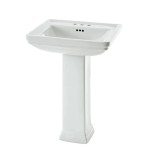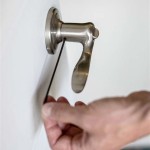How to Get Rid of Smelly Drains in Bathroom Shower
A persistent, foul odor emanating from a bathroom shower drain is a common household nuisance that can quickly degrade the overall cleanliness and comfort of the bathroom. This unpleasant smell indicates the presence of decaying organic matter accumulating within the drainpipe and its associated components. Ignoring this issue allows the buildup to worsen, resulting in a stronger, more pervasive odor and potentially leading to plumbing problems. Identifying the source of the smell and implementing appropriate cleaning methods are crucial for eliminating the odor and maintaining a hygienic bathroom environment.
Decomposing hair, soap scum, skin cells, and other organic debris are the primary contributors to drain odors. Over time, these materials accumulate along the drainpipe walls, creating a breeding ground for bacteria. These bacteria break down the organic matter, releasing gases such as hydrogen sulfide, which produces the characteristic rotten egg smell often associated with smelly drains. The design of the drain system itself can also contribute to the problem. Shower drains typically include a P-trap, a U-shaped section of pipe designed to hold water. This water barrier prevents sewer gases from escaping into the bathroom. However, if the P-trap dries out due to infrequent shower use, or if it is improperly installed or vented, sewer gases can permeate the bathroom.
The severity of the odor can fluctuate depending on factors such as humidity, temperature, and drain usage. Warm, humid conditions accelerate bacterial growth and decomposition, intensifying the smell. Similarly, infrequent shower use allows the organic matter to accumulate and decompose undisturbed, exacerbating the problem. Addressing a smelly shower drain requires a multifaceted approach, combining preventative measures with regular cleaning and, in some cases, professional plumbing assistance.
Identifying the Source of the Odor
Before attempting any cleaning solutions, it is essential to accurately pinpoint the source of the smell. While the drain itself is the most likely culprit, other potential sources should be considered to avoid unnecessary cleaning efforts. A visual inspection of the shower area can reveal obvious sources of foul odor. Check for mold or mildew growth on shower walls, grout lines, and shower curtains or doors. Mold and mildew produce a musty smell that can be mistaken for a drain odor. Thoroughly cleaning affected surfaces with a mold and mildew cleaner can eliminate this source of the problem.
Examine the shower drain cover for accumulated hair and debris. Remove the cover and visually inspect the drain opening for visible obstructions. Hair, soap scum, and other debris often cling to the drain edges and can contribute significantly to the odor. Manually remove any visible debris using a tool such as a bent wire hanger or a specialized drain-cleaning tool.
If the odor persists after cleaning the shower area and removing visible debris, the problem likely resides deeper within the drainpipe. A simple test can help confirm the drain as the source. Pour a generous amount of water down the drain and observe if the odor dissipates temporarily. If the smell returns shortly after the water drains, it indicates that the odor originates within the drainpipe itself. Conversely, if the odor remains unchanged after pouring water down the drain, the source may lie elsewhere, requiring further investigation.
DIY Cleaning Methods for Shower Drains
Several effective do-it-yourself cleaning methods can address smelly shower drains without resorting to harsh chemical drain cleaners. These methods utilize readily available household ingredients and are generally safer for both the environment and plumbing systems. However, it is important to exercise caution when mixing chemicals and to always wear appropriate protective gear, such as gloves, to prevent skin irritation.
The baking soda and vinegar method is a popular and effective solution for cleaning drains. Begin by pouring one cup of baking soda down the drain, followed by one cup of white vinegar. The mixture will fizz and bubble, creating a chemical reaction that helps to loosen and dissolve accumulated debris. Allow the mixture to sit for at least 30 minutes, or preferably overnight, to maximize its effectiveness. After the soaking period, flush the drain with hot water for several minutes to remove the loosened debris and eliminate the odor. This process can be repeated as needed to achieve the desired results.
Boiling water can also be used to effectively flush out drainpipes and dissolve grease and soap scum. Carefully pour a pot of boiling water down the drain. Avoid using boiling water on PVC pipes, as the high temperature can potentially damage them. For older metal pipes, boiling water is generally safe and can effectively melt away accumulated grease and grime. Exercise extreme caution when pouring boiling water to avoid burns. Repeat the process several times to thoroughly flush the drainpipe.
Another effective method involves using enzymatic drain cleaners. These cleaners contain enzymes that break down organic matter, effectively eliminating the source of the odor. Unlike harsh chemical drain cleaners, enzymatic cleaners are generally safe for pipes and the environment. Follow the manufacturer's instructions for application and dosage. Typically, the cleaner is poured down the drain and allowed to sit for several hours, or overnight, to allow the enzymes to work. Flush the drain with water after the soaking period to remove the dissolved organic matter.
Preventative Measures to Minimize Drain Odors
Proactive measures are essential for preventing the recurrence of smelly shower drains. Regularly cleaning the drain and implementing strategies to minimize the accumulation of organic matter can significantly reduce the risk of unpleasant odors. One of the most effective preventative measures is to install a drain strainer or hair catcher. These devices trap hair and other debris before they enter the drainpipe, preventing them from accumulating and decomposing. Regularly clean the strainer or hair catcher to remove the trapped debris and maintain its effectiveness.
Rinse the shower drain thoroughly after each use to flush away any loose hair, soap scum, or other debris. This simple step can prevent the buildup of organic matter and minimize the risk of odor formation. Avoid using excessive amounts of soap or shampoo, as these products can contribute to soap scum buildup in the drainpipe. Opt for soaps and shampoos that are specifically designed to minimize soap scum formation.
Periodically flush the drain with hot water to dissolve any accumulated grease or soap scum. This helps to keep the drainpipe clear and prevent the buildup of odor-causing bacteria. Maintain proper ventilation in the bathroom to reduce humidity levels, which can exacerbate bacterial growth and odor formation. Ensure that the bathroom fan is functioning properly and use it during and after showering. Open windows or doors to increase airflow and reduce humidity.
Consider consulting a professional plumber for persistent or recurring drain odors. A plumber can inspect the drain system for potential problems such as improper venting, damaged pipes, or blockages deep within the drainpipe. They can also provide professional drain cleaning services to remove stubborn debris and restore proper drain function. In some cases, replacing old or damaged drainpipes may be necessary to eliminate the source of the odor.
Regular maintenance and preventative measures are the key to maintaining a fresh-smelling bathroom and preventing unpleasant drain odors. By following these guidelines, homeowners can effectively manage their shower drains and avoid the frustration and embarrassment of a smelly bathroom.

Two Easy Ways To Fix A Smelly Shower Drain I Rick S Plumbing

How To Get Rid Of A Smelly Bathroom Drain Lipka Home

How To Fix Smelly Bathroom Floor Drains

Get Rid Of Shower Drain Smells Mr Rooter Syracuse

Why Your Shower Drain Smells Fixing Common Problems

How To Get Rid Of Smelly Drains In The Kitchen Bathroom Cleanipedia Za

Why Your Shower Drain Smells Fixing Common Problems

How To Fix Smelly Bathroom Floor Drains

How To Get Rid Of Smelly Shower Drains In Bathroom

How To Clean A Shower Drain
Related Posts







